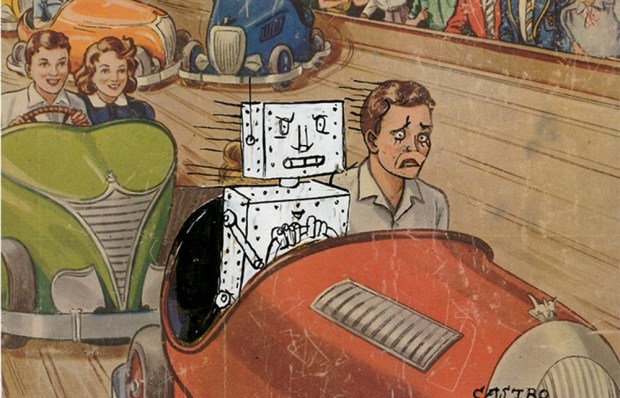Old Glaswegian joke:
‘Put your hat and coat on, lassie, I’m off to the pub.’
‘That’s nice — are you taking me with you?’
‘No, I’m just switching the central heating off while I’m oot.’
Late last year we bought a little holiday flat on the Kent coast. After I had furnished it with all the essentials — fibre-optic broadband, a large television, a Nespresso machine and a couple of random chairs — I looked for an excuse to buy some new gadgetry which I hadn’t tried before.
Given that the place is often empty during the week and was always chilly in the winter for a few hours after we arrived, I thought I would try one of the internet-controllable central heating thermostats you will have seen lavishly advertised recently. Google recently paid about £2 billion for Nest Labs, one of the firms developing this technology. Tado, a German firm, offers something similar, while a UK energy firm has developed Hive.
‘To be honest, I thought it was a bit of a gimmick at first — but I find I use it every day,’ said the man who came to install the various bits. He was right.
In fact this idea is almost more useful for a holiday home than for your main home. For one thing, it will automatically turn on your heating if the temperature falls below 5°C to stop your water-pipes freezing. And you can check and adjust the temperature of your house from anywhere in the world using the web, text or a smartphone or tablet app (which means you can keep the place stingily cold most of the time, but turn up the heat an hour or so before you arrive).
This is not only convenient but reassuring. Being slightly neurotic, I like to check the indoor temperature regularly when I am away: if it is, say, 16°C, then I can safely assume the place isn’t on fire. The website also allows me to satisfy my inner nerd by allowing me to chart the temperature over time.
A much-trumpeted claim is that this technology — at around £200 — can pay for itself in fuel savings within a year or so. This seems plausible. I find most homes and offices are just too damned hot by default, and this device encourages you to verge on the side of parsimony. The facility to programme separate temperatures for four parts of each day also allows you to adopt the healthy German habit of sleeping in a much cooler environment while still getting up to a warm house for breakfast.
I have had the system running for three months: in that time it has only failed to connect once, and then only for ten minutes or so. I’ll report back if this changes, but so far so good.
For the most part, the ‘interface design’ of housing and accommodation is surprisingly bad. It is absurd that homes do not have parcel lockers for deliveries, or master controls which, when you leave the house, let you turn off all the lights with a single switch. Modern lighting systems in hotels are often incomprehensible — and shower controls are now so confusing that you are usually drenched in freezing water by the time you have worked out how the stupid thing works. The connected thermostat, by contrast, is a rare step in the right direction.
Got something to add? Join the discussion and comment below.
Get 10 issues for just $10
Subscribe to The Spectator Australia today for the next 10 magazine issues, plus full online access, for just $10.
Rory Sutherland is vice-chairman of Ogilvy Group UK.
You might disagree with half of it, but you’ll enjoy reading all of it. Try your first month for free, then just $2 a week for the remainder of your first year.















Comments
Don't miss out
Join the conversation with other Spectator Australia readers. Subscribe to leave a comment.
SUBSCRIBEAlready a subscriber? Log in